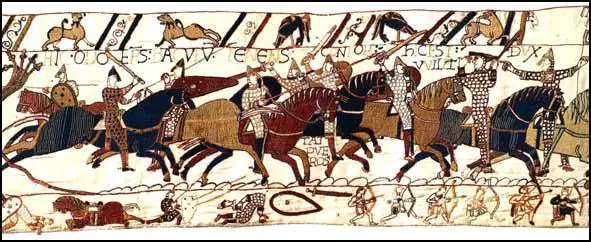William of Normandy's Army
When William of Normandy began organising the invasion of England in 1066 he asked knights from Poitou, Burgundy, Brittany and Flanders to accompany him. William also arranged for soldiers from Germany, Denmark and Italy to join his army. In exchange for their services, William promised them a share of the land and wealth of England.
Norman knights wore a knee-length hauberk. In battle the hauberk was pulled up to to protect the bottom of the face. The conical helmet had a nose guard for further protection against blows to the face. The long kite shield was designed to protect the left side of the body when carrying out cavalry charges and was made with leather over a wooden frame. The Norman knights would use a long double-edged sword and a lance. Sometimes knights carried a club-like weapon called a mace.
The Norman infantry used cross-bows and bows. These were weapons used by soldiers of low rank. In the Battle of Hastings only one archer is wearing a hauberk and metal helmet. The bow was about 50 centimetres (20 inches) long and was made of yew or ash wood. The bow was only pulled back to the chest and had a killing range of about 90 metres (100 yards).

and bows at the Battle of Hastings (Bayeux Tapestry, c. 1090)
